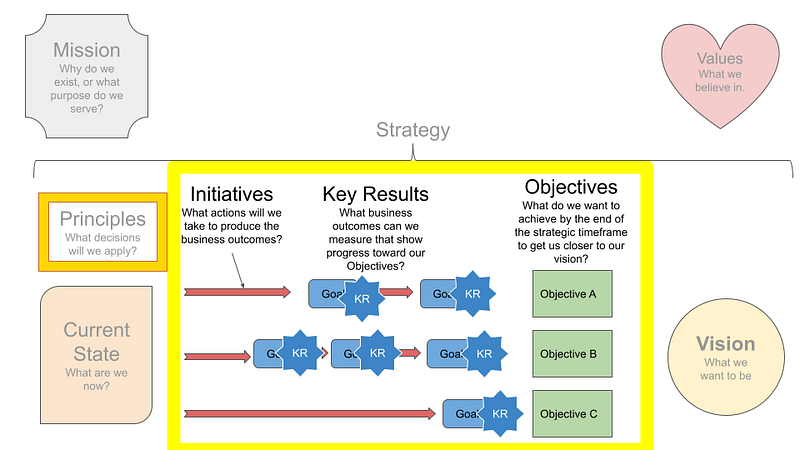Maximizing Effectiveness: Prioritizing OKR Initiatives for Success
Written on
Chapter 1: Understanding OKRs and Initiatives
OKRs, or Objectives and Key Results, serve as a framework to align departmental strategies with overarching organizational goals. They clearly outline what you aim to achieve (Objectives) and how to gauge successful progress (Key Results). However, they do not specify the specific tasks required to achieve these results; this is where Initiatives come into play.

As illustrated in the accompanying diagram (sourced from “Using Objectives and Key Results (OKRs) to Execute Your Strategy”), Initiatives encompass the actual work your team must undertake. These include your daily tasks, user stories, Kanban cards, and other components that detail the routine operations necessary for progress.
The Challenge of Existing Workloads
It's essential to recognize that Initiatives represent strategic tasks you and your team must handle. While you may rely on other departments for support, the focus here is on the responsibilities under your direct control. If you oversee a segment of the organization, you likely already have operational duties for which you are accountable. OKR Initiatives will add to your workload—so how do you determine which tasks to prioritize?
Distinguishing Between Strategic and Operational Tasks
You may contend that Initiatives hold greater significance as they directly align with the organization’s strategy. Conversely, operational tasks are crucial for maintaining day-to-day operations. If these tasks are neglected, the organization might struggle, rendering any strategic work irrelevant.
Chapter 2: Prioritization Strategies
To effectively prioritize tasks, you must move beyond broad categories like “strategic” or “operational.” A more granular approach is needed, focusing on individual tasks and their relative importance. Implementing a prioritization framework can be beneficial.
#### Utilizing the MoSCoW Method
One effective method I've employed throughout my career is the MoSCoW prioritization technique. This framework categorizes tasks into four distinct priority levels:
- Must-do: Essential tasks that must be completed to avoid serious repercussions.
- Should-do: Important tasks that are only to be addressed once all Must-do items are finished.
- Could-do: Tasks that are unlikely to be completed but are included for consideration.
- Won’t-do: Tasks that have been explicitly ruled out.
The MoSCoW method is most effective when deadlines are in play; without this urgency, everything may seem equally critical, which is counterproductive.

Collaboration is Key
An added benefit of the MoSCoW method is its transparency in decision-making. For it to be truly effective, stakeholders should be involved in the prioritization process. Since the tasks are likely being carried out for their benefit, including them allows for a clearer understanding of which tasks are critical and which can be postponed. It also sets realistic expectations regarding resource availability.
Adding Rank Ordering for Clarity
To enhance the prioritization process, I incorporate rank ordering for all tasks. This involves arranging tasks sequentially, assigning numbers to indicate their importance. This method helps clarify which tasks take precedence, especially when new requests arise. If a new task is introduced, you can easily determine its place on your list and adjust accordingly.
The simplification of MoSCoW can be effective in smaller teams, where it may be sufficient to omit the Won’t-do category, as it may be assumed that Could-do tasks are never going to be addressed.
Adapting to Change
With the dynamic nature of work, your prioritization process must be flexible. Regular reviews of tasks—similar to backlog grooming in agile practices—are essential for re-evaluating priorities, removing completed tasks, and integrating new ones appropriately. If a regular review isn't feasible, you can also make adjustments as tasks are completed and new assignments come in.
This video titled "What's the difference between OKRs and tactics and initiatives?" offers insights into the distinctions between these concepts, enhancing your understanding of strategic alignment.
In this video, "Should you include initiatives in your OKRs?", the discussion revolves around the importance of incorporating initiatives into your OKR framework for improved strategic execution.